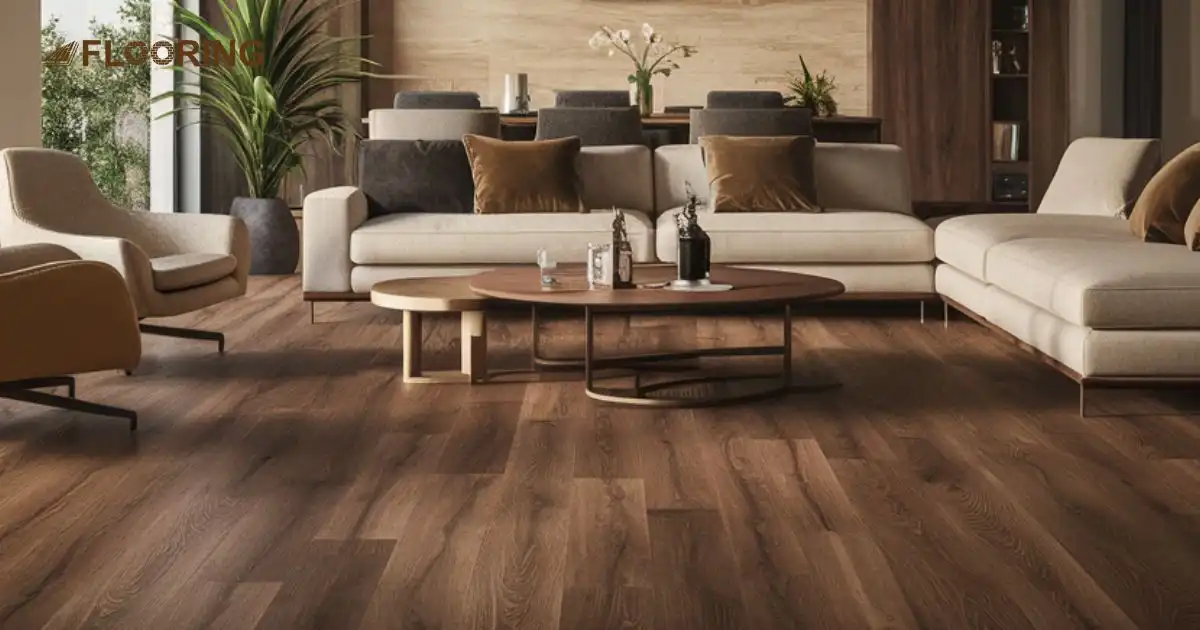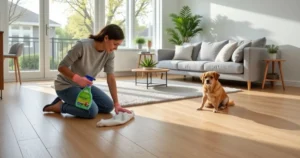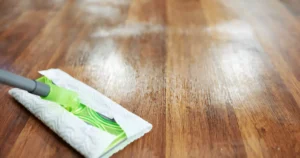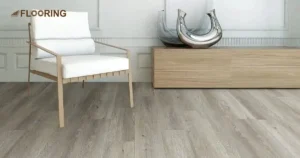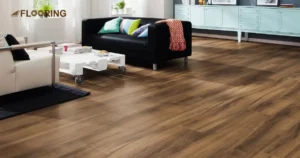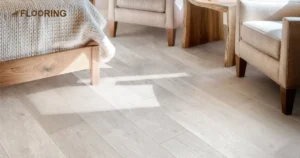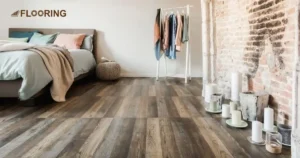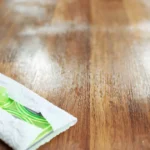Wood Plastic Composite (WPC) flooring is made from a combination of wood fibers, wood-like materials, and plastic. It is designed to provide the aesthetic appeal of natural wood while offering enhanced durability and water resistance. WPC has become popular for residential and commercial spaces due to its versatility and ease of maintenance.
Table of Contents
Are you tired of worrying about spills, scratches, and constant maintenance of your floors? Say goodbye to worrying about water damage and say hello to a floor that can handle your busy lifestyle. Innovative WPC flooring combines the beauty of natural wood with the durability of modern materials, offering a perfect blend of style and practicality.
This flooring is easy to maintain and incredibly durable, making it an ideal choice for high-traffic areas in your home. Imagine having the rich, darkwood floors you’ve always wanted, but without the stress of constant upkeep. As we explore the world of WPC flooring, we’ll uncover its benefits, applications, and why it might be the perfect fit for your home.
Key Takeaways
Longevity: WPC flooring can last between 10 to 20 years with proper care.
Underlayment: Additional underlayment is typically not necessary for this flooring.
Scratch Resistance: WPC is resistant to scratches but not completely scratch-proof.
Cost Factors: WPC is more expensive due to its construction and added features.
Thickness: The thickness of WPC flooring ranges from 5 to 8 millimeters.
Moisture Suitability: WPC is highly suitable for high-moisture areas like bathrooms and kitchens.
DIY Installation: WPC is DIY-friendly with easy click-lock systems.
WPC vs SPC: WPC offers more comfort, while SPC provides greater rigidity and affordability.
Overall Benefits: WPC floor offers a blend of beauty, comfort, and durability, making it an excellent choice for various home environments.
Brief History of WPC Flooring
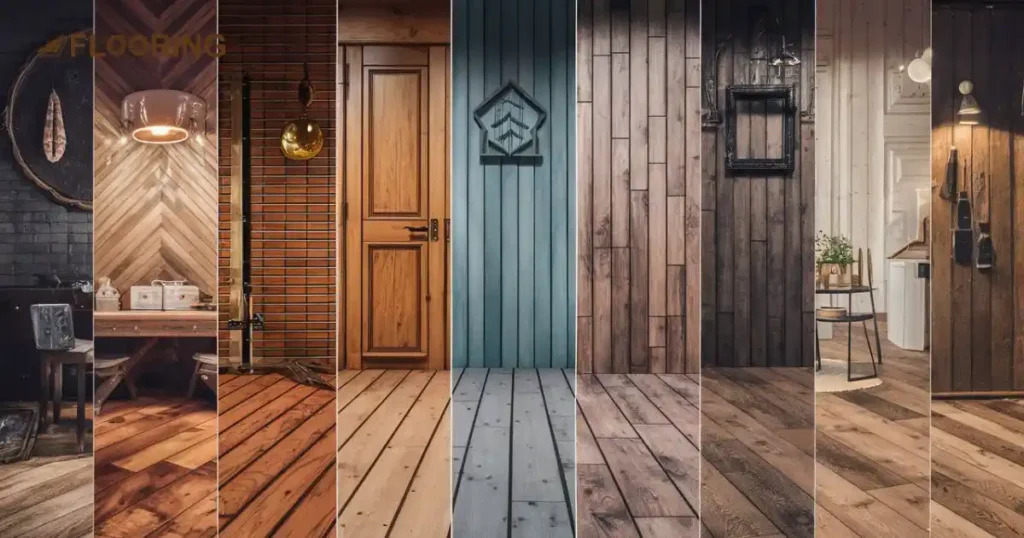
WPC flooring has a relatively recent history in the flooring industry. This innovative material was first introduced in the early 2000s as a response to the growing demand for durable and low-maintenance flooring options. The blend of wood fibers and plastic polymers created a product that combined the aesthetic appeal of wood with the resilience of synthetic materials.
The development of WPC was driven by advances in polymer technology and the need for more sustainable building materials. As homeowners and businesses sought alternatives to traditional wood and laminate flooring, WPC emerged as a versatile solution.
Its water-resistant properties made it especially popular in areas prone to moisture, such as kitchens, bathrooms, and basements. Over the years, WPC has evolved to include a variety of styles, colors, and textures, making it a popular choice for modern interiors.
Composition of WPC Flooring
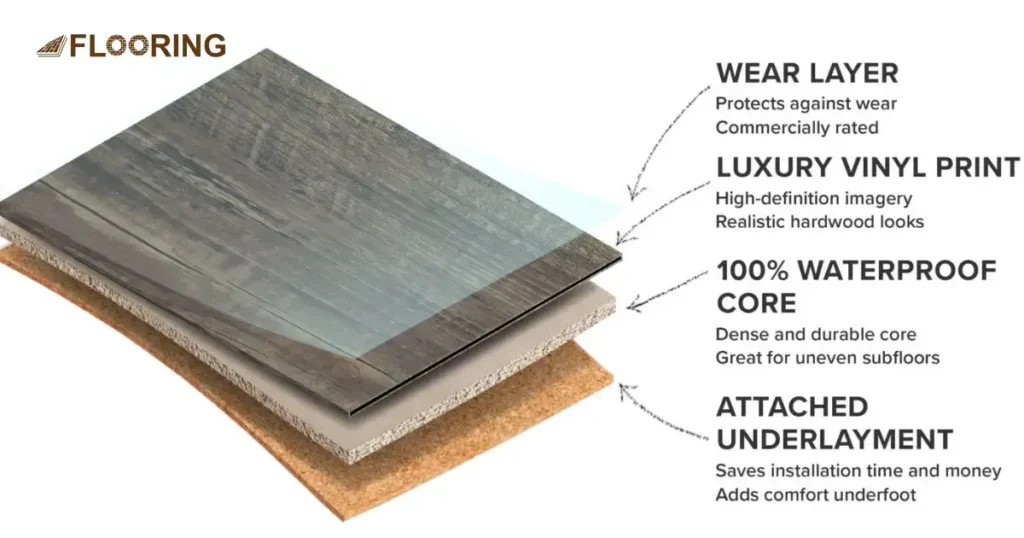
This flooring is a marvel of modern engineering, blending natural and synthetic materials. This unique composition gives WPC its strength, water resistance, and beauty. Let’s break down the layers that make up this innovative flooring option.
Core Materials
The core of WPC floors is what sets it apart from other types of flooring. It consists of a blend of wood fibers and plastic polymers. This unique combination provides a sturdy and stable base that resists warping and swelling, even in humid conditions.
The wood fibers give the flooring a natural look and feel, while the plastic polymers add strength and durability. This core layer is essential for the flooring’s overall performance, ensuring it can withstand heavy foot traffic and everyday wear and tear.
Surface Layer
The surface layer of WPC is designed to provide both aesthetic appeal and practical benefits. This top layer is usually a printed vinyl material that can mimic the appearance of natural wood, stone, or tile. It is coated with a clear protective layer that enhances its durability and resistance to scratches, stains, and fading.
This surface layer is crucial for maintaining the flooring’s look over time and makes cleaning and maintenance easy. The variety of designs available allows homeowners to choose a style that fits their decor while enjoying the benefits of a tough, low-maintenance surface.
Advantages of WPC Flooring
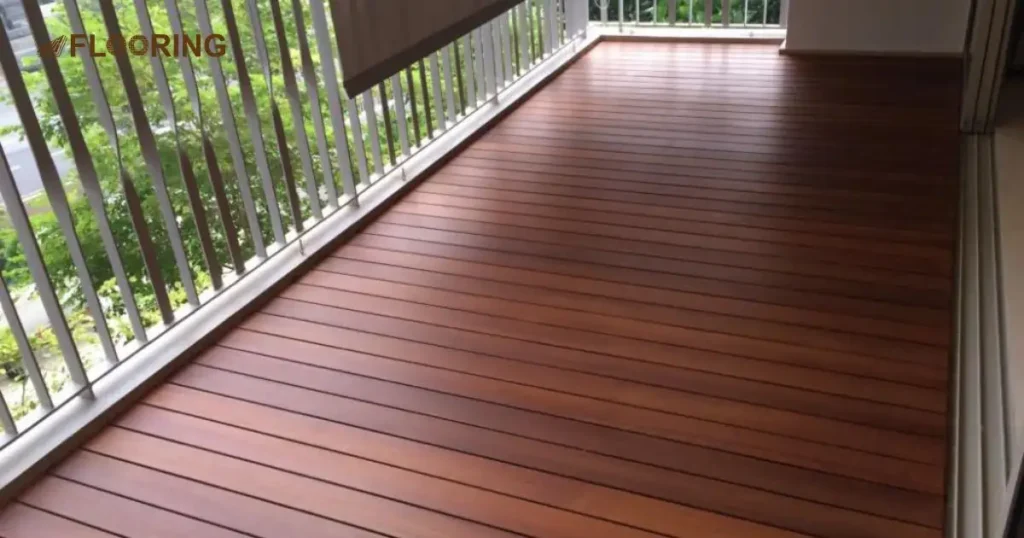
WPC offers a range of benefits that make it a top choice for many homeowners. From its tough nature to its good looks, WPC has a lot to offer. Let’s explore the key advantages that set WPC apart from other options.
Durability
WPC flooring is known for its exceptional durability. Its unique composition of wood fibers and plastic polymers makes it resistant to wear and tear, even in high-traffic areas. This durability ensures that your floors will maintain their appearance and functionality for years, making WPC an excellent long-term investment for your home.
Water Resistance
One of the standout features of WPC flooring is its water resistance. Unlike traditional wood flooring, it can handle spills and moisture without warping or swelling. This makes it ideal for areas like kitchens, bathrooms, and basements where water exposure is common. You can enjoy the beauty of wood with this flooring without worrying about water damage.
Aesthetic Appeal
WPC flooring offers a wide range of design options that can mimic the look of natural wood, stone, or tile. The surface layer can be printed with various patterns and textures, allowing homeowners to choose a style that complements their decor. This versatility makes WPC a popular choice for both traditional and contemporary interiors.
Eco-Friendly Composition
WPC flooring is also environmentally friendly. It often contains recycled materials, reducing the need for virgin resources. Additionally, the production process generates less waste compared to traditional wood flooring. Choosing this flooring means you’re making a sustainable choice that helps protect our planet.
Low Maintenance Needs
One of the biggest advantages of WPC flooring is its low maintenance requirements. It is easy to clean and doesn’t need special treatments to keep it looking good. Regular sweeping and occasional mopping with a mild cleaner is usually enough to maintain its appearance, saving you time and effort.
Underfloor Heating Compatibility of WPC Floors
This flooring is compatible with underfloor heating systems, providing added comfort during colder months. The material’s composition allows for efficient heat transfer, ensuring your floors remain warm and cozy. This feature makes WPC flooring a practical choice for enhancing your home’s comfort.
Flexible Installation
It is designed for easy and flexible installation. Many WPC products feature click-and-lock systems that simplify the installation process, allowing even DIY enthusiasts to tackle the project. This flexibility can save on installation costs and make the process more convenient.
Disadvantages of WPC Flooring
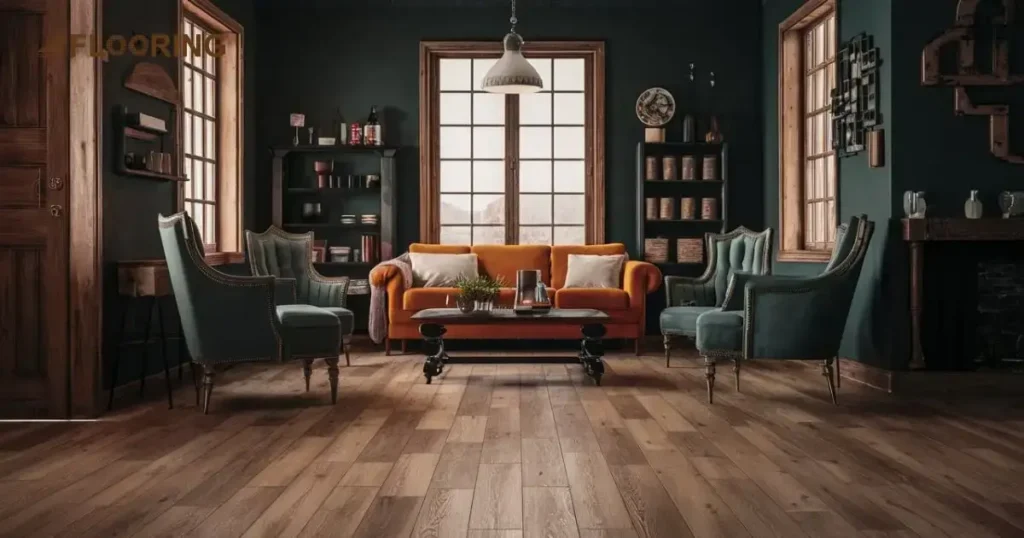
While WPC has many benefits, it’s important to consider its drawbacks too. No flooring option is perfect, and WPC has its share of cons. Let’s take a balanced look at some potential downsides to help you make an informed decision.
Cost Considerations
WPC can be more expensive than other flooring options like laminate or vinyl as WPC flooring offers many benefits. The higher cost may be a consideration for budget-conscious homeowners. However, the long-term durability and low maintenance needs can offset the initial investment over time.
Potential for Scratches
Despite its durability, WPC flooring is not completely immune to scratches. Heavy furniture or sharp objects can cause damage to the surface layer. It’s important to use protective pads under furniture legs and be mindful when moving heavy items to prevent scratches.
Susceptibility to Discoloration
WPC can be susceptible to discoloration if exposed to direct sunlight over extended periods. UV rays can cause the colors to fade, which may affect the overall appearance of your floors. Using window treatments or UV-protective coatings can help mitigate the issue of discoloration of WPC flooring.
Heat Sensitivity
WPC flooring can be sensitive to high temperatures. Extreme heat can cause the material to expand, which may lead to buckling or gaps. It’s crucial to maintain a stable indoor temperature and avoid placing hot objects directly on the floor to prevent damage.
Color and Texture Range
While WPC flooring offers a variety of designs, the range of colors and textures may not be as extensive as other flooring types like hardwood or tile. Some homeowners may find the available options limiting when trying to match specific decor styles.
Chemical Off-Gassing Concerns
WPC flooring can emit volatile organic compounds (VOCs) due to the plastic components in its composition. These emissions can affect indoor air quality, especially in poorly ventilated areas. Choosing WPC products with low VOC emissions can help address this concern.
Compatibility with Floor Finishes
WPC flooring is only sometimes compatible with certain floor finishes and treatments. For instance, it cannot be refinished or sanded down like traditional hardwood. This limitation means you’ll need to replace the flooring if it becomes severely damaged or worn over time.
Noise Transmission
WPC flooring can sometimes transmit noise more than other flooring types. This is particularly noticeable in multi-story buildings where footsteps and other sounds can carry through the floors. Using underlayment or acoustic padding can help reduce noise transmission.
WPC vs SPC Flooring – Key Differences Explained
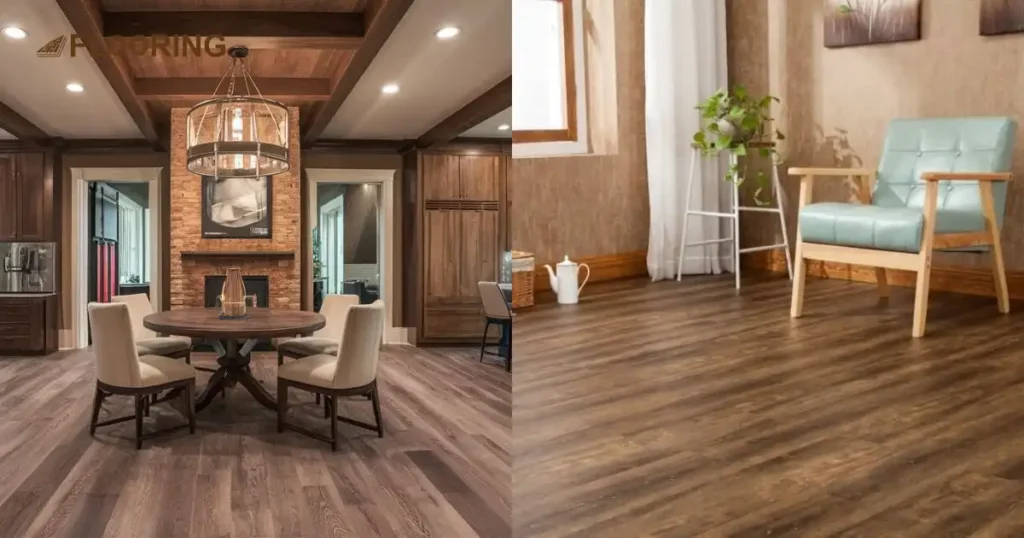
Composition: WPC flooring is made from a blend of wood fibers and plastic, while SPC flooring is composed of stone powder and plastic.
Core: The core of WPC is softer and more resilient, providing a more comfortable feel underfoot. SPC has a rigid core, making it more durable and stable.
Thickness: WPC flooring is generally thicker than SPC flooring, offering better sound absorption and insulation.
Durability: SPC flooring is more durable and resistant to impacts and heavy traffic than WPC flooring.
Water Resistance: WPC and SPC are highly water-resistant, but SPC’s stone core gives it an edge in high-moisture environments.
Installation: Both types offer easy installation with click-and-lock systems, but SPC’s rigidity can make it easier to install over uneven surfaces.
Comfort: WPC flooring provides a softer and warmer feel, making it more comfortable for standing over long periods.
Cost: WPC flooring tends to be more expensive than SPC due to its thicker, more comfortable core and wood-like appearance.
Comparison with Other Flooring Types
When choosing flooring, it’s crucial to weigh your options. WPC floor has unique features that set it apart from other types. Let’s compare WPC to some popular alternatives to help you make an informed decision.
Hardwood Flooring vs WPC
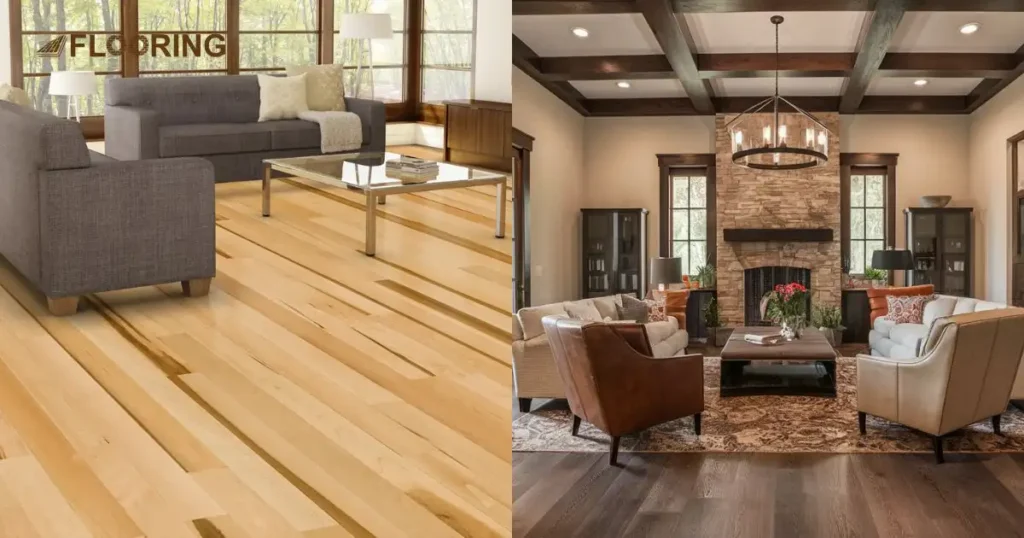
Material: Hardwood is made from natural wood, while WPC consists of wood fibers and plastic polymers.
Durability: Hardwood is susceptible to scratches and water damage, whereas WPC is more durable and water-resistant.
Maintenance: Hardwood requires regular maintenance and refinishing, while WPC is low maintenance.
Aesthetic: Hardwood offers an authentic wood look, while WPC can mimic wood but is not identical.
Cost: Hardwood is generally more expensive than WPC.
Installation: Hardwood often needs professional installation, whereas WPC is DIY-friendly with click-lock installation.
Laminate vs WPC Flooring
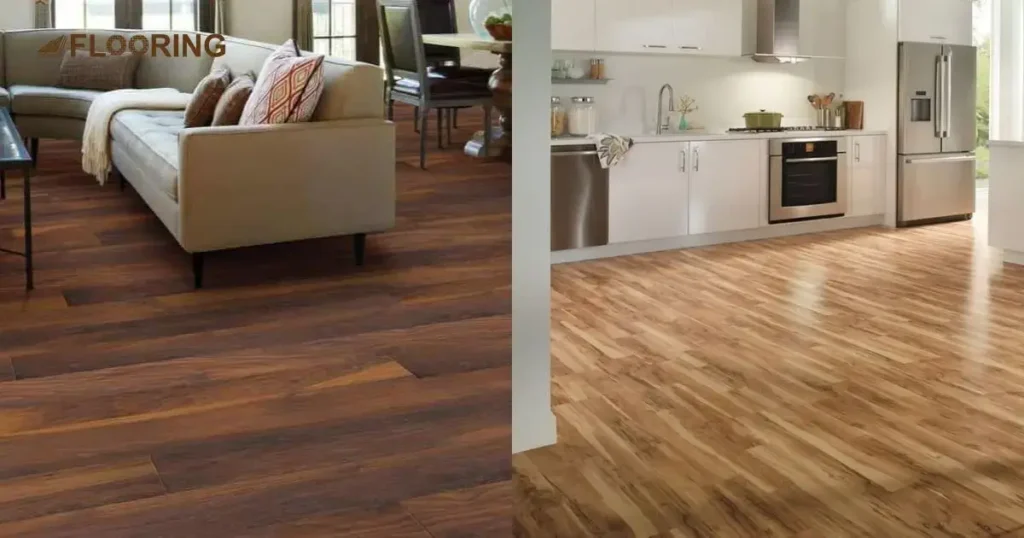
Core Composition: Laminate has a high-density fiberboard (HDF) core, while WPC has a core of wood fibers and plastic polymers.
Water Resistance: Laminate is susceptible to water damage, whereas WPC is highly water-resistant.
Durability: Laminate is durable but can suffer from water damage; WPC is more durable and water-resistant.
Comfort: Laminate is harder underfoot, while WPC offers a softer, more comfortable feel.
Cost: Laminate is generally cheaper than WPC.
Installation: Both feature easy click-lock installation systems, making them DIY-friendly.
Vinyl Flooring vs WPC
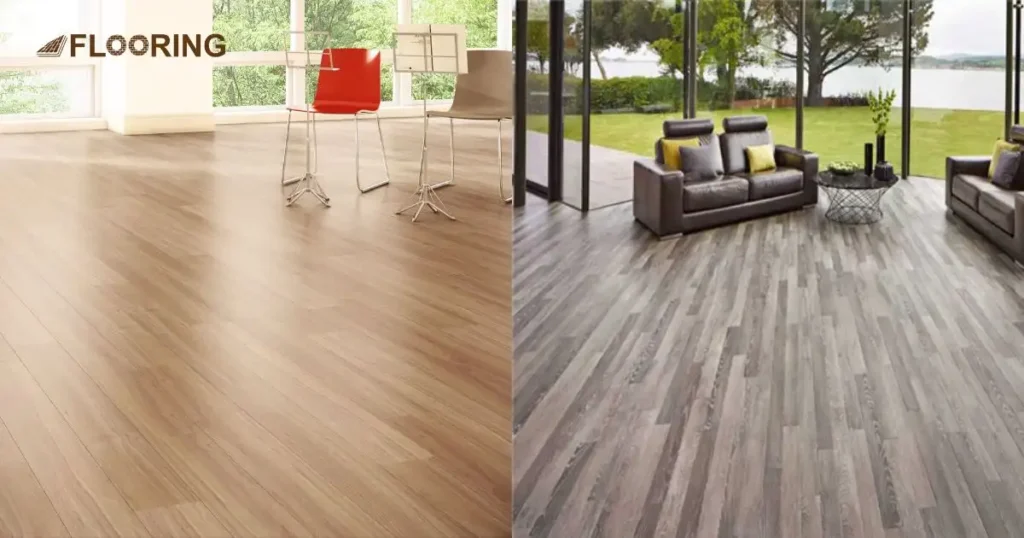
Core Composition: Vinyl has a PVC core, while WPC consists of wood fibers and plastic polymers.
Comfort: Vinyl is less comfortable underfoot compared to the softer WPC.
Durability: Both vinyl and WPC are highly durable and water-resistant.
Aesthetic: Both can mimic wood, stone, or tile effectively.
Cost: Vinyl is generally cheaper than WPC.
Installation: Both feature easy click-lock installation systems, making them DIY-friendly.
Maintenance Tips for WPC Flooring
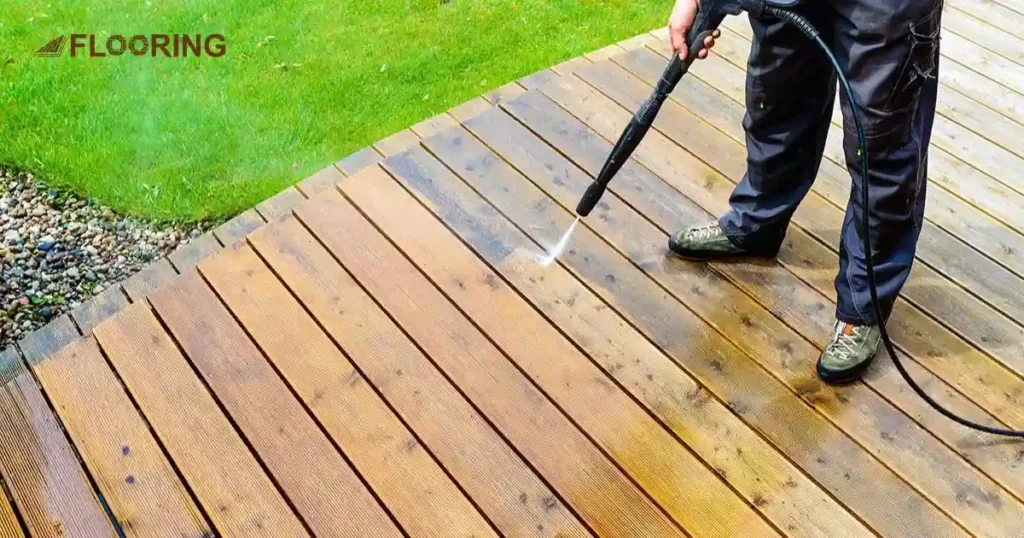
Maintaining WPC is simple and straightforward. With just a few easy steps, you can keep your floors looking beautiful and extend their lifespan.
Regular Cleaning: Sweep or vacuum your WPC flooring regularly to remove dust and debris. This prevents scratches and keeps the floor looking fresh.
Damp Mopping: Use a damp mop with a mild cleaner to clean the floor and avoid using excessive water to prevent damaging WPC floors.
Protective Pads: Place protective pads under furniture legs to prevent scratches and dents on the floor’s surface.
Avoid Harsh Cleaners: Use cleaners specifically designed for WPC flooring. Avoid harsh chemicals and abrasive cleaners that can damage the floor.
Quick Spill Cleanup: Wipe up spills immediately to prevent any potential damage. Although WPC is water-resistant, prolonged exposure to moisture can cause problems.
Use Door Mats: Place door mats at entryways to reduce the amount of dirt and moisture tracked onto the floor.
Limit Direct Sunlight: Use blinds or curtains to limit direct sunlight exposure, which can cause fading over time.
Avoid Dragging Items: Lift furniture and heavy items instead of dragging them across the floor to avoid scratches.
Popular Brands of WPC Flooring
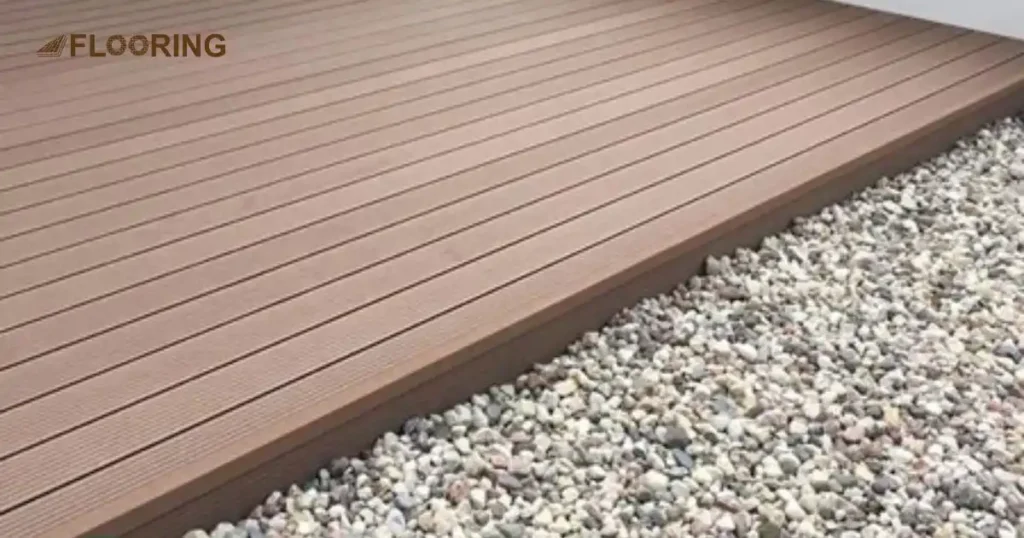
When it comes to WPC, several brands stand out for their quality and innovation. Each brand brings its own unique features and styles to the table. Let’s explore some of the top names in WPC flooring to help you find the perfect fit for your home.
COREtec
COREtec is one of the leading brands in the WPC flooring industry. Known for its high-quality products and innovative designs, COREtec offers a wide range of styles and colors that cater to various tastes. Their flooring is durable, water-resistant, and easy to install, making it a popular choice for homeowners.
Mohawk
Mohawk is another well-known brand offering a diverse selection of WPC flooring. Mohawk’s products are recognized for their durability and aesthetic appeal. They provide excellent water resistance and come in a variety of designs that can enhance any room’s decor.
Shaw Industries
Shaw Industries is a major player in the flooring market, offering high-quality WPC flooring options. Their products are designed to be both stylish and functional, with features like water resistance and easy maintenance. Shaw’s WPC is suitable for various applications, from residential to commercial settings.
Armstrong
Armstrong is a trusted name in flooring, known for its innovative and reliable products. Their WPC flooring lines offer durability, ease of installation, and a range of design choices. Armstrong’s commitment to quality ensures that their WPC meets the needs of modern homeowners.
NuCore
NuCore provides a range of WPC flooring options that combine style, performance, and affordability. Their products are known for being easy to install and maintain, with a focus on water resistance and durability. NuCore’s WPC is designed to withstand the demands of everyday life.
Karndean
Karndean is a premium brand offering luxurious WPC flooring solutions. Their products are renowned for their realistic wood and stone looks, high durability, and low maintenance requirements. Karndean’s WPC is perfect for those seeking a high-end look with practical benefits.
Is WPC Flooring a Good Choice?
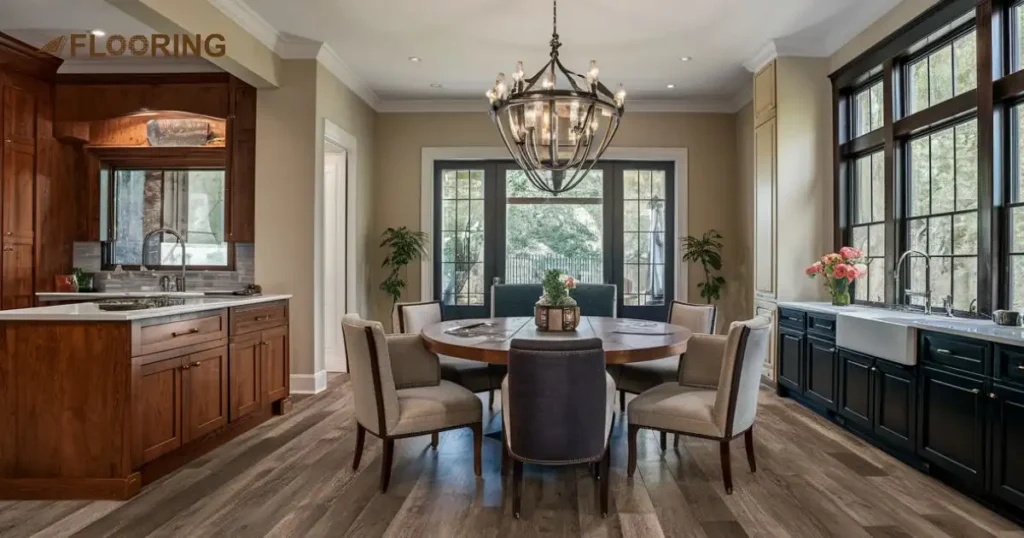
Choosing the right flooring for your home is a big decision, and WPC flooring is often a top contender. This innovative flooring offers numerous benefits that make it an excellent choice for many households. One of the standout features of this flooring is its water resistance.
Unlike traditional wood flooring, WPC can handle spills and moisture without warping or damage, making it ideal for kitchens, bathrooms, and basements. Durability is the recognition of WPC, it can withstand heavy foot traffic and is resistant to scratches and stains, which is perfect for families with children and pets.
The variety of styles and colors available means you can find a design that complements your home’s decor while enjoying the practical benefits of a low-maintenance floor. Whether you’re renovating a single room or your entire home, WPC flooring offers a variety of benefits.
Frequently Asked Questions
Is WPC flooring better than laminate flooring?
WPC flooring is generally considered better than laminate flooring due to its higher durability and water resistance. While laminate can suffer from water damage, WPC is highly water-resistant, making it suitable for more areas in the home.
How long does WPC flooring last?
WPC can last between 10 to 20 years with proper care and maintenance. Its longevity depends on factors like foot traffic, maintenance routines, and the quality of the flooring.
Does WPC need underlayment?
WPC flooring typically comes with an attached underlayment, so additional underlayment is usually not necessary. However, in certain situations, adding underlayment can enhance soundproofing and insulation.
Does WPC flooring scratch easily?
WPC flooring is more resistant to scratches compared to some other flooring types, but it is not completely scratch-proof. Using protective pads under furniture and maintaining regular cleaning can help minimize scratches.
Why is WPC expensive?
WPC is more expensive due to its durable and water-resistant construction, which combines wood fibers and plastic polymers. The added comfort and ease of installation also contribute to its higher cost.
What is the thickness of WPC flooring?
The thickness of WPC typically ranges from 5 to 8 millimeters. This thickness includes the wear layer, core layer, and attached underlayment, providing a comfortable and durable surface.
Is WPC flooring suitable for high-moisture areas?
Yes, WPC is highly suitable for high-moisture areas such as bathrooms, kitchens, and basements. Its water-resistant properties make it an excellent choice for these spaces.
Can WPC flooring be easily installed by a DIY enthusiast?
WPC has been designed keeping in mind that it should be DIY-friendly. This features click-lock installation systems that make it easy to install. With basic tools and some patience, a DIY enthusiast can successfully install WPC flooring.
What should be considered when selecting between WPC and SPC flooring?
When selecting between WPC and SPC flooring, consider factors like comfort, durability, and cost. WPC offers more comfort underfoot, while SPC is more rigid and durable, and usually more affordable.
Conclusion
WPC stands for Wood Plastic Composite, a versatile and durable flooring option that has become increasingly popular. Its unique composition of wood fibers and plastic polymers provides excellent water resistance, making it ideal for a variety of home environments.
Choosing WPC means opting for a long-lasting and low-maintenance option that can withstand the rigors of everyday life. Its easy installation process and wide range of design options make it accessible for both DIY enthusiasts and professional installers. Whether you need flooring for high-moisture areas or just want a beautiful, resilient floor, WPC is a reliable choice.
Its advanced features and benefits make it stand out in the flooring market, providing homeowners with a dependable solution for their flooring needs. By understanding what WPC stands for and its advantages, you can make an informed decision for your next flooring project.
